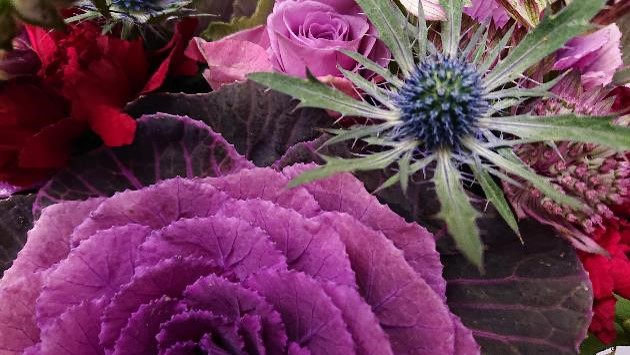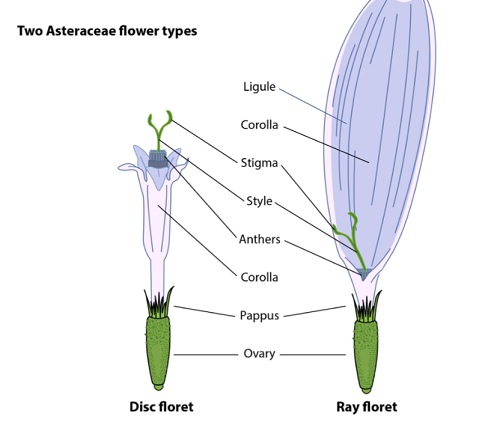Learn Plant Taxonomy
Taxonomy is not taught often enough today - a fact widely recognised by those who work with plants at all levels, from tradesmen to professionals - gardeners, landscapers, nurserymen, crop farmers, arborists and others - through to scientists, environmental managers and farmers.
This course fills a very important need, and for those who do it; provides a significant advantage over those who have not properly learned the basics of plant taxonomy.
Study Plant Taxonomy and -
- Learn about identifying and classifying plants.
- Understand about applying your knowledge to determine the types of plants that can be planted where - with the knowledge of environmental requirements, and avoiding planting potentially poisonous or harmful plants in the wrong locations.
- Gain knowledge which can be applied to the development of new cultivars.

COURSE STRUCTURE AND CONTENT
There are 10 lessons in this course:
Lesson 1: Introduction to Taxonomy
- Introduction to Plant Taxonomy
- Scientific Vs. Vernacular Names
- Linnaeus
- Binomials
- Uniformity
- Protein Analysis
- Ranks and Language
- Ranks of Classification - KPCOFGS
- Plant Phyla
- Plant Families
- Genus and Species
- Latin Names
- Gardener's Ranks
- Hybrids
- Subspecies
- Varieties
- Cultivars
- International Code of Botanical Nomenclature
- The Basic Ideas
- Principle of Priority
- Legitimate Naming
- Recent Changes to the Code
- International Code of Nomenclature for Cultivated Plants
- Taxonomic Name Resolution Service
- International Plant Names Index
- Trademarks & Patents
- Plant Breeders Rights
- The Rise of Molecular Data
- The Impact of Molecular Data
Lesson 2: Describing Plant Parts
- Habit
- Stems
- Hairs
- Leaves
- Compound and Simple Leaves
- Leaf Shapes
- Leaf Margins
- Leaf Structure
- Leaf Arrangements
- Leaf Venation
- Leaf Modifications
- Roots
- Root Modifications
- Terminology
- Flowers
- The Inflorescence
- Fruits
- Dry Fruits
- Fleshy Fruits
- Compound Fruits
- A Key to the Main Types of Fruits
- Terminology
Lesson 3: Recording & Analysing Plant Descriptions
- HERBARIA - Collecting and Preserving a Plant
- Fresh Material
- Arranging Plants for Pressing
- Pressing Difficult Specimens
- The Drying Process
- Herbarium Specimens
- Photographs
- The Problem of Colour
- The Law Relating to Plant Collecting
- Describing a Plant on Paper
- The Equipment You Need
- Botanical illustration
- Floral Diagrams
- Floral Diagram Technique
- Floral Formulae
- DNA Barcoding
- Process of Using DNA Barcoding for Plant Identification
- Applications of DNA Barcoding
- CHEMICAL ANALYSIS (Chemotaxonomy)
Lesson 4: Taxonomic Techniques
- The advantages of using keys and their limitations
- Using a key
- The rules when making a key
- Lamiaceae (Simplified Key)
- Rules When Writing Couplets
- Best Practice Points
- Making a key
- Why botanical families are so useful when identifying plants
Lesson 5: Primitive Plants
- The Bryophytes
- Mosses
- Liverworts
- Hornworts
- VASCULAR PLANTS or tracheophytes
- Vascular Tissue and Why it is Important in Evolution of Life on Earth
- A glossary to help you
- The Lycopodiopsida (or Lycophytes)
- Clubmosses - Plants in the family Lycopodiaceae
- Quillworts - Plants in the Family Isoetaceae
- Spike Mosses or Lesser Clubmosses – Plants in the Family Selaginellaceae
the euphyllophytes – the seed plants, horsetails, and ferns
- The Seed Plants
- Horsetails
- The Ferns
Lesson 6: Seed Plants
- The gymnosperms
- The cycads – 1 order, 3 families, 10 genera, 285 species
- Ginkgo - 1 order, 1 families, 1 genus, 1 species
- The Gnetidae - 3 orders, 3 families, 3 genera, 71 species
- Welwitschiaceae - 1 Genus, 1 Species
- Gnetaceae - 1 Genus, 30 Species
- The conifers - 3 orders, 6 families, 69 genera, 591 species
- The Conifers’ Life History
- The Cycads, Ginkgo, and Gnetidae — How they Differ from the Conifers
- The Six Families of Conifers
- The Angiosperms
- Flowers and Why they are Important in Evolution of Life on Earth
- The Flowering Plant’s Life History
- The Diversity of Angiosperms
- Phylogeny of Land Plants
- Introduction
- Darwin’s Tree of Life Metaphor - The Hidden Bond of Descent
- Why Use DNA Sequences for Classification?
- The Principle of Monophyly
Lesson 7: The Phylogeny of Land Plants
- The major changes in flowering plant taxonomy
- The End of the Monocot-Dicot Split
- Finally, Some Resolution Within the Monocots
- Some Surprises
- Name Changes Resulting from the Increase in Evidence
- When Applying the Principle of Monophyly Results in Name Changes
- What we can learn from phylogenies
Lesson 8: Monocotyledons
- Summary of Important Families
- The Monocots — SIGNIFICANT FAMILIES
- Arecaceae
- Aizoaceae (syn. Ficoidaceae)
- Dioscoraceae
- Liliaceae
- Orchidaceae
- Iridaceae
- Amaryllidaceae
- Asparagaceae
- Arecaceae
- Pontederiaceae
- Musaceae
- Bromeliaceae
- Poaceae
- Cyperaceae
- Juncaceae
Lesson 9: Dicotyledons (Part I)
- Important Dicot Families
- Key to Selected Angiosperm Families
- Lower-growing Soft-wooded Plants
- Apiaceae
- Asteraceae
- Brasicaceae
- Crassulaceae
- Lamiaceae
- Euphorbiaceae
- Gesneriaceae
- Ranunculaceae
Lesson 10: Dicotyledons (Part 2)
- Fabaceae - Papilionoideae, Mimosoideae, Caesalpinoideae
- Fagaceae
- Ericaceae
- Malvaceae
- Myrtaceae
- Ongaraceae
- Rosaceae
- Proteaceae
- Rutaceae
- Rubiaceae
COURSE AIMS
- Explain how plants are classified, including both benefits of and contradictions within the scientific system as followed by horticulturists and botanical scientists across different parts of the world
- Examine and describe parts of a plant, both sexual and asexual, at various stages of the plant’s life cycle.
- Process descriptive information about a plant using taxonomic techniques that involve processing that data to create a better understanding and/or record of that information.
- Explain a variety of tools used in taxonomic work.
- Explain the taxonomy of land plants that do not produce seeds.
- Explain taxonomy of a range of significant, seed producing plants, including gymnosperms.
- Explain the relationship between different types of plants (i.e. phylogeny), and how molecular information impacts on this in taxonomic considerations.
- Differentiate between at least 10 different families of monocotyledon plants, through inspection and identification of a range of commonly shared characteristics within that family.
- Differentiate between at least 10 different families of dicotyledon plants which predominantly contain lower growing soft wooded plants or herbs; through inspection and identification of a range of commonly shared characteristics within that family.
- Differentiate between at least 10 different families of dicotyledon plants which predominantly contain woody trees and shrubs; through inspection and identification of a range of commonly shared characteristics within that family.

WHY STUDY THIS COURSE?
- For professional development
- To improve employment or career prospects
- To be more successful in business
- Risk management
- Heighten your ability to see and differentiate characteristics in plants
- Identify plants more accurately
- Identify plant names easier